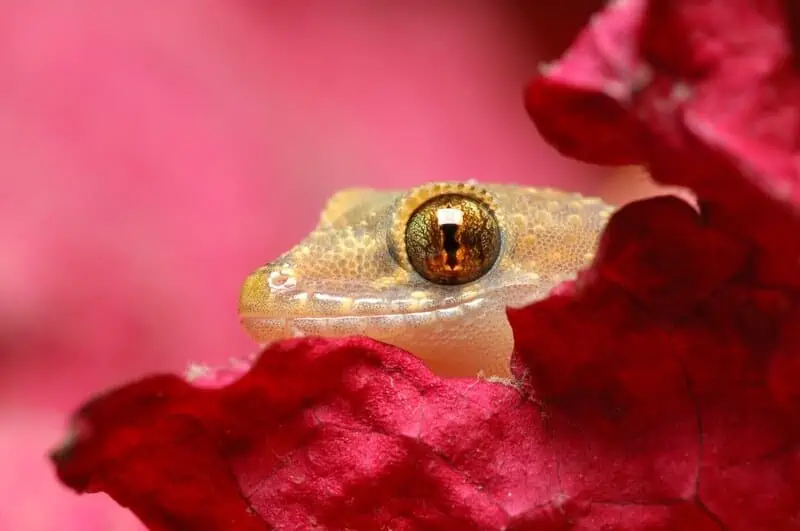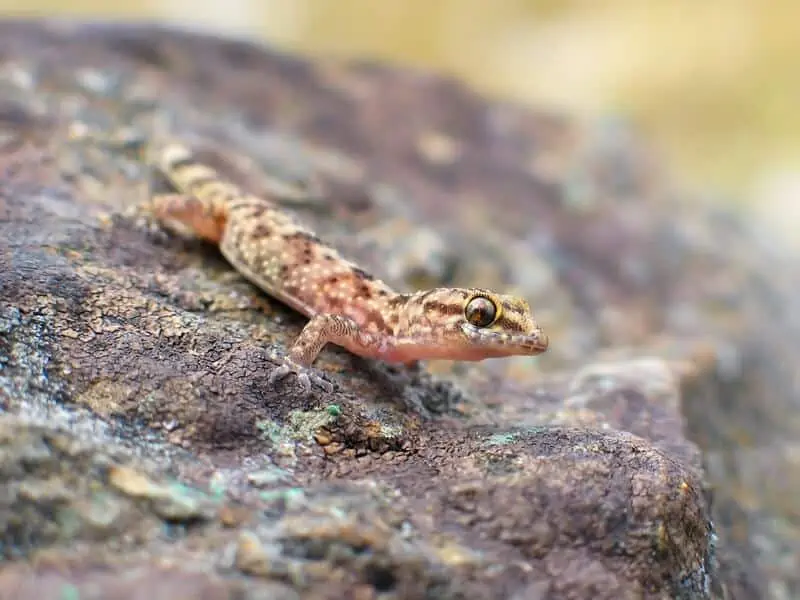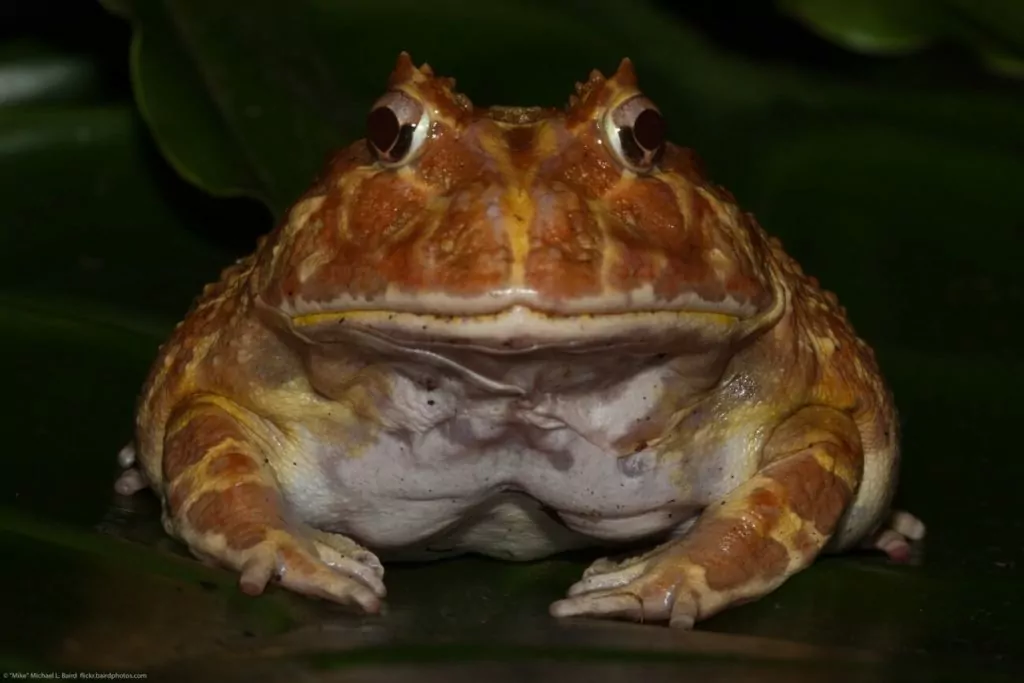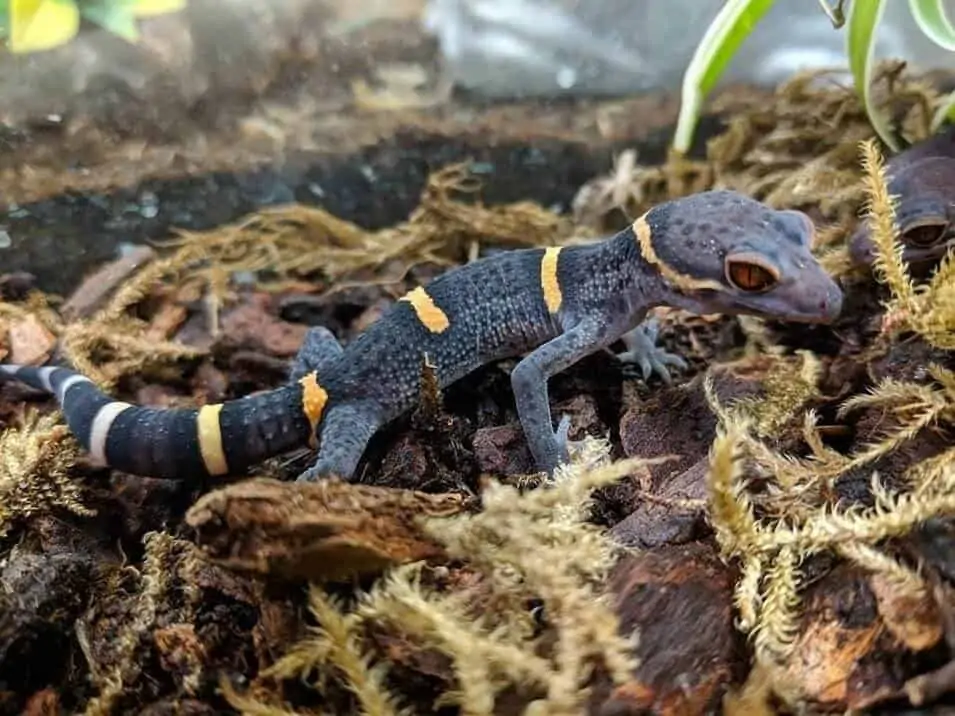Mediterranean house geckos are adorable and friendly lizards that many reptile enthusiasts choose to keep as pets. But interestingly enough, their origin makes this a point of confusion among other people!
This guide will cover everything you need to know about Mediterranean house gecko care. We’ll get into their habitat setup, lifespan, size, diet, and more!
Table of Contents
Species Summary
The Mediterranean house gecko (Hemidactylus turcicus) is a unique reptile that made its way into the pet trade by very unconventional means. This lizard is native to the Mediterranean area. They’re most prevalent in countries like Cyprus, Turkey, and Spain.
As the name would imply, the reptile is commonly seen in homes. They like to hide in dark corners of the house or natural habitats with plenty of hiding spots.
These geckos are so widespread that most people don’t give them much thought. In fact, it’s considered taboo to harm them because of their gentle nature. Not only that, but many believe that the lizards are beneficial in homes because they control insect populations.

In 1915, Mediterranean house geckos appeared in Florida. They were likely brought into the United States as pets before humans let them go into the wild. Alternatively, they could have escaped and continued to survive in the hot and humid environment.
Either way, it didn’t take long for numbers to flourish in Florida and nearby states. Now, they’re considered an invasive species. They’re common in Florida, Texas, and neighboring areas.
Many experts attribute their spread in the United States to their overall adaptability and resilience. Those two traits also make these lizards great pets. They’re an excellent choice for beginners, but their docile nature makes them a favorite among seasoned enthusiasts as well.
Appearance & Colors
Thanks to their distinct look, Mediterranean house geckos are easy to distinguish from other types of geckos. While they have many of the same hallmarks, like sticky toe pads and cylindrical bodies, this species has an eye-catching color.
Most of the body is typically gray, brown, or tan. Pink and purple undertones are pretty common. The skin is bumpy, and you might also see darker spots to create a mottled pattern. The tail features stripes instead of dots, resulting in a unique juxtaposition that’s hard to miss.
The underbelly is usually white and translucent. If you shine a light on the lizard, you may see its heart beating or some developing eggs!
The head is wide and features a rounded snout. The eyes are large, lidless, and have visible vertical slits instead of round pupils.
Like most geckos, the Mediterranean house gecko has short and stocky limbs. A hand of dexterous fingers and sticky pads make it easy for them to get around their environment.
Can You Keep Them as Pets?
Mediterranean house geckos make fantastic pet lizards. They’re pretty easy to take care of and are surprisingly peaceful.
If you happen to live in an area where these lizards are common, it’s always a better idea to buy from an established breeder or pet store. Captive-bred lizards are usually healthier, have a lower risk of genetic issues, and will typically have a longer lifespan.
Lifespan
The average Mediterranean house gecko lifespan is quite broad. On the lower end, they can live a short three years. However, healthy geckos with great care are capable of living as long as nine years!
Expert Tip: There are no guarantees, and many factors contribute to the average lifespan. One of the biggest is the quality of care you provide. Mediterranean house geckos living in pristine conditions and given nutritious diets are far less likely to succumb to disease and early death.
Average Size
If you don’t have a ton of room for pets, these reptiles can be an excellent choice.
The size of a full-grown Mediterranean house gecko is a mere four to five inches in length. Larger lizards can exceed five inches (barely), but they never get bigger than that.
Mediterranean House Gecko Care
The Mediterranean house gecko is resilient enough to establish invasive populations in countries thousands of miles away from its native lands. It’s undoubtedly tough enough to thrive in captivity!
It doesn’t matter if you’re an experienced herpetology buff or a new reptile owner. Keeping these little guys healthy is a cinch. Here are some Mediterranean house gecko care guidelines to help you get started on the right foot.
Enclosure Size
You don’t need a massive terrarium to keep a Mediterranean house gecko. A 10-gallon glass aquarium will suffice. If you have fresh hatchlings, you can use a five-gallon tank.
If you want to provide the optimal habitat, a 20-gallon terrarium is a fantastic choice. Go for a vertically oriented model to allow for plenty of climbing opportunities.
Expert Tip: For multi-lizard setup, 20-gallon enclosures should be the bare minimum. A tank of that size is suitable for three lizards. For every additional gecko, aim for a size increase of about five gallons.
A standard glass aquarium is the best choice for Mediterranean house geckos. Make sure to secure a metal mesh lid on top. These lizards can and will escape if given the opportunity!
What To Put In Their Habitat
There’s a ton of creative wiggle room when designing a habitat for your Mediterranean house gecko. It’s important to remember that these reptiles are accustomed to living in homes, so they adapt to pretty much anything!
Even though setting up the habitat is one of the easiest parts of Mediterranean house gecko care, you should still keep their ideal conditions in mind. The best thing you can do is create a natural setup that mimics a lush environment.
For your substrate, it’s recommended to use paper towels. These lizards are messy, and you can easily toss paper substrate adds loads of convenience. Reptile carpets can work as well, but you’ll need to clean them quite frequently.
Expert Tip: If you prefer a more natural look, additive-free cypress mulch, orchid bark, or even organic soil works well. Feel free to add some sphagnum moss or leaf litter if you want to go the extra mile.
On top of the substrate, add foliage, vines, and branches. The goal here is to create many climbing surfaces for your Mediterranean house gecko. Get creative and build unique paths for the lizard to explore.
As for the plants, dense foliage is always good. You can use fake or faux plants. The latter is easier to care for, but both are suitable as long as they provide coverage.
Temperature & Lighting
Mediterranean house geckos prefer warm and humid environments. Use incandescent bulbs and heating pads to create consistent temperatures around 75 degrees Fahrenheit during the day.
It’s important to remember that these geckos thermoregulate to stay healthy. As a result, you’ll need to create a temperature gradient using a basking lamp. Place a basking lamp on one side of the aquarium to raise temperatures to 90 degrees.
The habitat can get as low as 65 degrees at night without issues. These lizards prefer a slightly cooler environment after dark. However, don’t the temperature drop below 65 degrees.
Expert Tip: This species is largely nocturnal, so full-spectrum lighting isn’t necessary. However, a UVB light can be useful in maintaining the day and night cycle.
Humidity
Maintaining the proper levels of humidity is an essential part of Mediterranean house gecko care.
The humidity level in their enclosure should be between 60 and 75 percent at all times. It’s a good idea to invest in a hygrometer that you can monitor around the clock.
Varying humidity levels can lead to many problems, which we’ll get into later. If you need to raise the moisture in the air, consider misting the enclosure daily. The plants and substrate should hold onto water to keep things muggy.
If too much humidity is an issue, simply increase air circulation to encourage moisture evaporation.
Water
Most reptile experts recommend keeping a small bowl of water in the habitat. However, don’t be surprised if you never see your Mediterranean house gecko drinking out of it. These lizards prefer to drink from water droplets that form on plants and other surfaces (which is another reason why misting the enclosure is important).
Still, include a bowl that’s large enough for the gecko to get in. You might see them soaking every once in a while. Keep an eye on the water quality and replace it frequently.
Mediterranean House Gecko Food & Diet
Mediterranean house geckos are true insectivores. Their diet consists entirely of insects and they usually won’t even touch plant-based foods.
In the wild, they eat everything from moths to cockroaches. You can mix things up by rotating between roaches, worms, and crickets in captivity. Mealworms and other popular insect-based reptile foods work, too.
When providing live insects, make sure to gut-load them first. Usually, you can find gut-loaded insects at local pet stores. Also, never offer insects that are bigger than the size of the gecko’s head.
Expert Tip: You’ll need to feed Mediterranean house geckos three to four times a week. For each feeding, about four or five insects will suffice.
Every other feeding, dust the insects in a vitamin supplement powder. It should be a multivitamin that contains calcium to meet all their nutritional needs.
Potential Health Issues
Mediterranean house geckos are relatively hardy. They wouldn’t be such an invasive species if they weren’t! The reptile has no problem staying healthy with high-quality care.

However, they’re not indestructible. These lizards can experience all the usual ailments.
Some of the most common health issues are directly tied to poor living conditions. For example, respiratory infections are a product of improper temperature and humidity levels.
When a Mediterranean house gecko suffers from these infections, you might notice labored breathing or discharge. The tissue in the mouth and nostrils get inflamed, resulting in what looks like bleeding.
Take your lizard to a vet specializing in exotic animals if you think that you’re dealing with an infection. They’re pretty easy to treat with the right antibiotics.
To prevent them from occurring, stay on top of tank conditions. Keep a hygrometer and thermometer in the tank so that you can ensure conditions are in the proper range. Stability is key when caring for any reptile, so avoid major fluctuations.
Skin infections and fungal problems are common as well. In most cases, they come from unsanitary living conditions.
Check the environment frequently and pick up any droppings. Mediterranean house gecko droppings are long, light brown, and usually have white tips. If the poop looks runny or crumbly, that could indicate a health problem.
Spot clean messes daily. About once a month, do a full sanitization. Remove your gecko temporarily and clean every surface. You can use a reptile-safe disinfectant or a 10-percent bleach and water mixture to keep the bacteria under control.
Finally, there’s the possibility of impaction. Gut impaction is a common issue among geckos who live on a substrate that’s too easy to consume. Your gecko is bound to eat some soil as they hunt down their food.
But if they eat too much substrate or consume a large piece, it can cause gut impaction. Once again, take a trip to the vet for treatment. The best way to avoid compaction is to use a substrate that’s not loose, such as paper towels.
Behavior & Temperament
This cute little lizard is a joy to own. They’re gentle and rarely show any signs of aggression. Most are relaxed, exploring the habitat you create and clinging onto the glass walls of the enclosure.
Expert Tip: Don’t be alarmed if you don’t see much of these lizards during the day. Mediterranean house geckos are primarily nocturnal. When the sun is out, and the lights are on, they spend most of their time hidden away. They come out during dusk and display the most activity around 2:00 AM.
It is possible to keep more than one gecko in the same environment. However, you have to plan the group accordingly since males do spar.
They can get territorial, making squeaking sounds to ward off potential invaders. Males often get into fights. When that happens, the lizards often drop their tails.
Don’t worry! It grows back. But it’s best to avoid that issue altogether by keeping the geckos stress-free.
If you want to keep a group of lizards together, have one male and multiple females. That way, you can maintain peace!
Handling Them
Mediterranean house geckos don’t mind handling, but you have to earn their trust first.
Start handling them early in life, limiting sessions to only a few minutes at a time. Eventually, these lizards will get used to you and have no problem hanging out in your hand.
But even then, exercise caution! These little critters can move fast, and things can go south pretty quickly if they’re uncomfortable in your hands.
Never make sudden movements and be gentle. Let the lizard get comfortable and always support their body.
When removing the gecko from the enclosure, have a firm grip from the top and support their bottom. Better yet, let the Mediterranean house gecko crawl into your hands of its own volition. Never grab onto its tail or squeeze too hard.
If your Mediterranean house gecko shows any signs of discomfort, gently put them back into the enclosure. Otherwise, they’ll drop their tail or try to escape.
Conclusion
Mediterranean house gecko care is as simple as it gets. These reptiles are a joy to own and shouldn’t give you any problems (no matter how much experience you have).
We hope you found this guide useful and consider getting this species as a pet. If you have any questions that we didn’t address above, send them our way and we’ll be happy to help.


